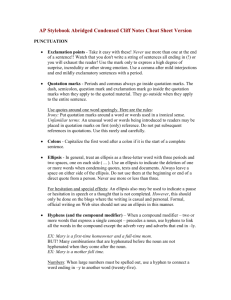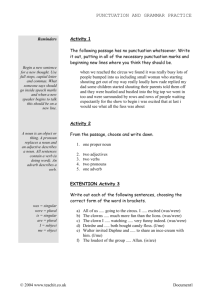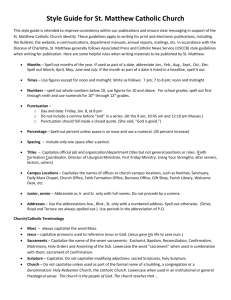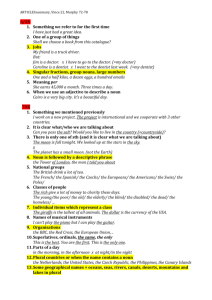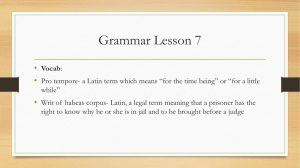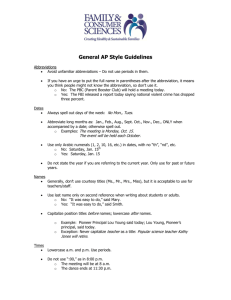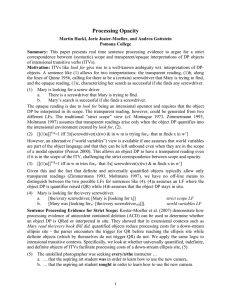Class AP Style Manual
advertisement
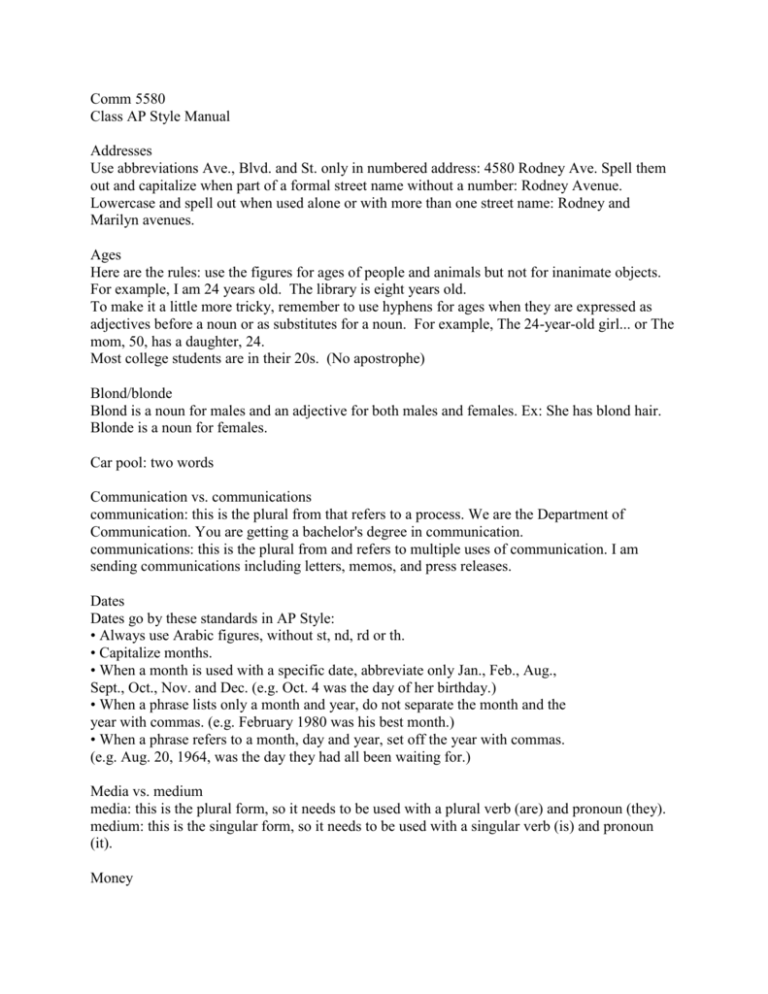
Comm 5580 Class AP Style Manual Addresses Use abbreviations Ave., Blvd. and St. only in numbered address: 4580 Rodney Ave. Spell them out and capitalize when part of a formal street name without a number: Rodney Avenue. Lowercase and spell out when used alone or with more than one street name: Rodney and Marilyn avenues. Ages Here are the rules: use the figures for ages of people and animals but not for inanimate objects. For example, I am 24 years old. The library is eight years old. To make it a little more tricky, remember to use hyphens for ages when they are expressed as adjectives before a noun or as substitutes for a noun. For example, The 24-year-old girl... or The mom, 50, has a daughter, 24. Most college students are in their 20s. (No apostrophe) Blond/blonde Blond is a noun for males and an adjective for both males and females. Ex: She has blond hair. Blonde is a noun for females. Car pool: two words Communication vs. communications communication: this is the plural from that refers to a process. We are the Department of Communication. You are getting a bachelor's degree in communication. communications: this is the plural from and refers to multiple uses of communication. I am sending communications including letters, memos, and press releases. Dates Dates go by these standards in AP Style: • Always use Arabic figures, without st, nd, rd or th. • Capitalize months. • When a month is used with a specific date, abbreviate only Jan., Feb., Aug., Sept., Oct., Nov. and Dec. (e.g. Oct. 4 was the day of her birthday.) • When a phrase lists only a month and year, do not separate the month and the year with commas. (e.g. February 1980 was his best month.) • When a phrase refers to a month, day and year, set off the year with commas. (e.g. Aug. 20, 1964, was the day they had all been waiting for.) Media vs. medium media: this is the plural form, so it needs to be used with a plural verb (are) and pronoun (they). medium: this is the singular form, so it needs to be used with a singular verb (is) and pronoun (it). Money The rule is: always lowercase use figures and $ if quoting an exact amount For amounts more then $1 million dollars use the $ and numerals up to 2 decimal places Never use never label someone's race, disability, religion or other aspect of one's own self unless it is absolutely pertinent to the story. Also one should never use ditto marks. Numbers Generally, the rule is to spell out the numbers 1-9 and use the figures for 10 and above. For example, I have two brothers and one sister. Another example, my cousins have 10 cats and six dogs and 13 kids. Punctuation Ellipsis: An ellipsis appears in papers as the following ... When using an ellipsis, you should not use more than three periods and there should be a space on both sides of the periods. Ellipsis markings are to be used in the following situations: condensation of sentences and quotations, in moments of hesitation, and for special effects. Ex: When I go to class each day, I feel like ... A period goes on the inside of quotes or parentheses. "This is my post." Semicolon: It should be used when there needs to be more of a separation than a comma allows. ex. The contestants were ready; the timekeeper was not. Seasons Always use lowercase: spring, summer, winter, fall. But when talking about events such as Winter Olympics, you capitalize the season in that case. Spanish Names The family names of both the father and mother usually are considered part of a person's full name. The normal sequence is given name, father's family name mother's family name: Jose Lopez Portillo. On second reference, use only the father's name (Lopez), unless the individual prefers of is widely known by multiple last name (Lopaz Portillo). States Spell out the names of the fifty states if they stand alone. A helpful hint is that any of the states that have five or fewer letters should ALWAYS be spelled out and never abbreviated. Example: Texas, Idaho, Utah, Iowa, Maine and Ohio. Also, Alaska and Hawaii are never abbreviated as well, I just tell myself it's because they aren't part of the 48 continental states. States abbreviations are: (AL) Ala. (IL) Ill. (MS) Miss. (NC) N.C. (VT) Vt. (AZ) Ariz. (IN) Ind. (MO) Mo. (ND) N.D. (VA) Va. (AR) Ark. (KS) Kan. (MT) Mont. (OK) Okla. (WA) Wash. (CA) Calif. (KY) Ky. (NE) Neb. (OR) Ore. (WV) W.Va. (CO) Colo. (LA) La. (NV) Nev. (PA) Pa. (WI) Wis. (CT) Conn. (MD) Md. (DE) Del. (MA) Mass. (FL) Fla. (MI) Mich. (GA) Ga. (MN) Minn. (NH) N.H. (RI) R.I. (WY) Wyo. (NJ) N.J. (SC) S.C. (NM) N.M (SD) S.D. (NY) N.Y. (TN) Tenn. University "university" is always lower case unless it is included in the proper name. Ex: The university is has good professors. Ex: The University of Utah won the football game. Web site Often times it is spelled out as one word but it is in fact two separate words w/the “w” capitalized as in Web site and Web page. Words to not abbreviate in a text: 1) Names such as Robert (Robt.) or Charles (Chas.). 2) Names of the days of the week except in tabular form. 3) Percent as % except in tabular form. 4) Cents as ¢. 5) And as & unless the & is an official part of a name (Procter & Gamble). 6) Christmas as Xmas. 7) Professor. Never Prof.


